William Blake, artist prophet of good and evil
Melancholy, anxiety and madness are recurring themes in the art works of the Englishman William Blake. He imagines and paints supernatural forces, beyond human understanding, that are beyond the control of mortals.
In his work, this visionary artist emphasises the fragility of human beings in the face of a hostile world. With impeccable technique and masterful drawing, he presents us with a universe of extreme emotions: love, horror, dreams and violence.
“I am not interested in reasoning and comparing: my thing is to create.”
An English genius. Painter, draftsman, engraver and poet. His varied artistic production was the result of his mystical character and his visionary mind, very unconventional in the religious field.
Extraordinary mystical and prophetic senses overwhelmed him. His pictorial style fuses Neoclassicism and Romanticism in a very suggestive way.
William Blake was a true visionary, prophet and precursor, anticipating the Romanticism movement (1780-1990) by several decades.
This was the style of artists who wish to redefine the figure of man and the role of art in a world that was facing great changes. With the French Revolution and Napoleon in power, artists felt the need to create works with themes of chaos, ambiguity and confusion.
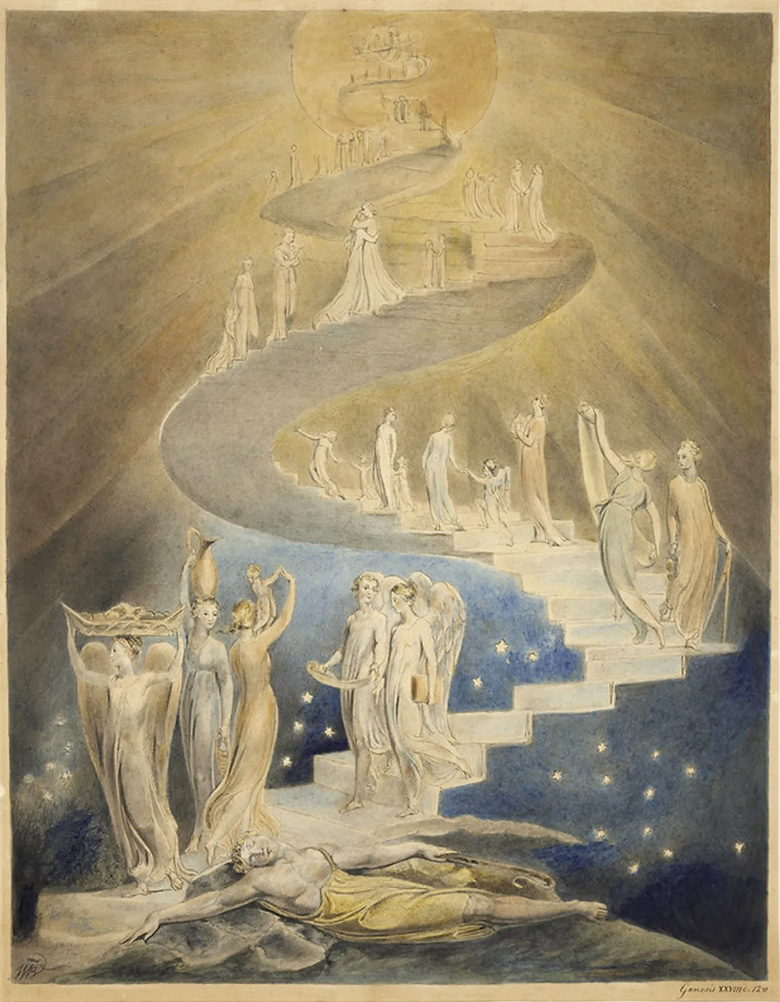
Movement, color and drama became the protagonists of his works. As Romantic artists would later see, for Blake, the world is a place dominated by nature and internal forces, destructive and uncontrollable for man. In contrast to this wild nature, human beings are small, vulnerable and in permanent danger.
Born in London (1757-1827), he was one of seven children of James Blake, a hosier. He attended school until 10, being educated at home by his mother Catherine Wright. He loved writing. At 12 he published his first work: Poetic Sketches.
He enrolled in an engraving school at 14, working as apprentice to engraver James Basire. He studied at London Royal Academy. He soon rebelled against the aesthetic doctrines of its Director, prestigious painter Sir Josua Reynolds, defender of Neoclassicism.
His most popular poems, Songs of Innocence and Songs of Experience, have an exquisite lyrical style. In 1784 he started a printing press in his house.
Although he initially failed, years later he was able to make a living as an engraver and illustrator.
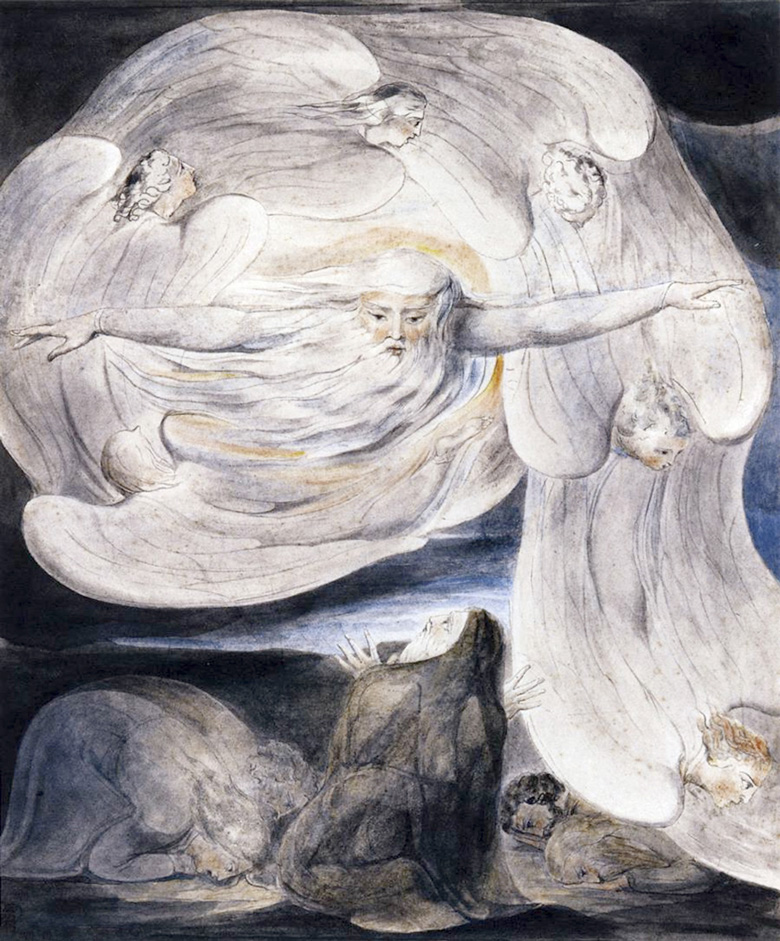
Considered Pre-Romantic, his graphic work challenged the artistic conventions of the 18th century.
Blake‘s painting, based on fantastic visions of rich symbolism, is strongly influenced by the Italian genius, Michelangelo Buonarroti.
His inspiration from the Renaissance is evident, due to the exaggerated muscularity of his figures and the power of his foreshortening. The Ancient of Days stands out, which forms the frontispiece of his prophetic Poem Europe.
He devoted much of his painting to religious themes: illustrations for John Bunyan‘s The Pilgrim’s Journey and The Bible’s Book of Job. He also created pagan drawings: Poems by Thomas Gray and 537 watercolours for Night Ideas by Edward Young.
Blake saw painting and literature as two means of expression for a single spiritual mission. Both are inseparable to appreciate his work.
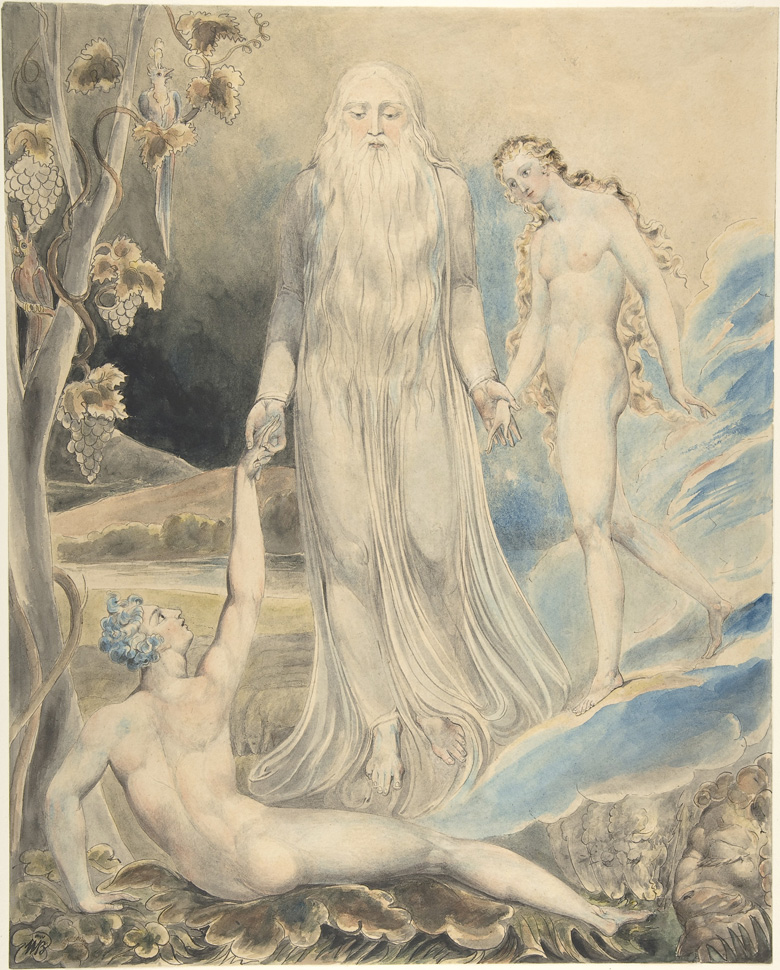
Blake abhorred slavery and believed in sexual and racial equality. Several of his poems and paintings express a universal notion of humanity.
“To see a world in a grain of sand and a paradise in a wild flower, hold infinity in the palm of your hand and eternity in an hour.”
In 1800 he moved to the seaside in Felpham, where he worked sponsored by William Hayley. In his mature works, the great written and decorated visionary epics appear: Milton, Vala, The Four Zoas (aspects of the human soul) and Jerusalem.
He wrote An Island in the Moon, a collection of letters and short poems. It was called the Rossetti Manuscript, as it was acquired by the English painter, leader of the Pre-Raphaelites, Dante Gabriel Rossetti.
Blake makes a distinction between the God of the Old Testament, whose restrictions he rejected, and that of the New Testament: Jesus Christ, whom he considered a key positive influence.
The title of one of his works defines the contradiction of the artist (that of every human being), always seeking the delicate balance between good and evil: “Marriage of heaven and hell.“
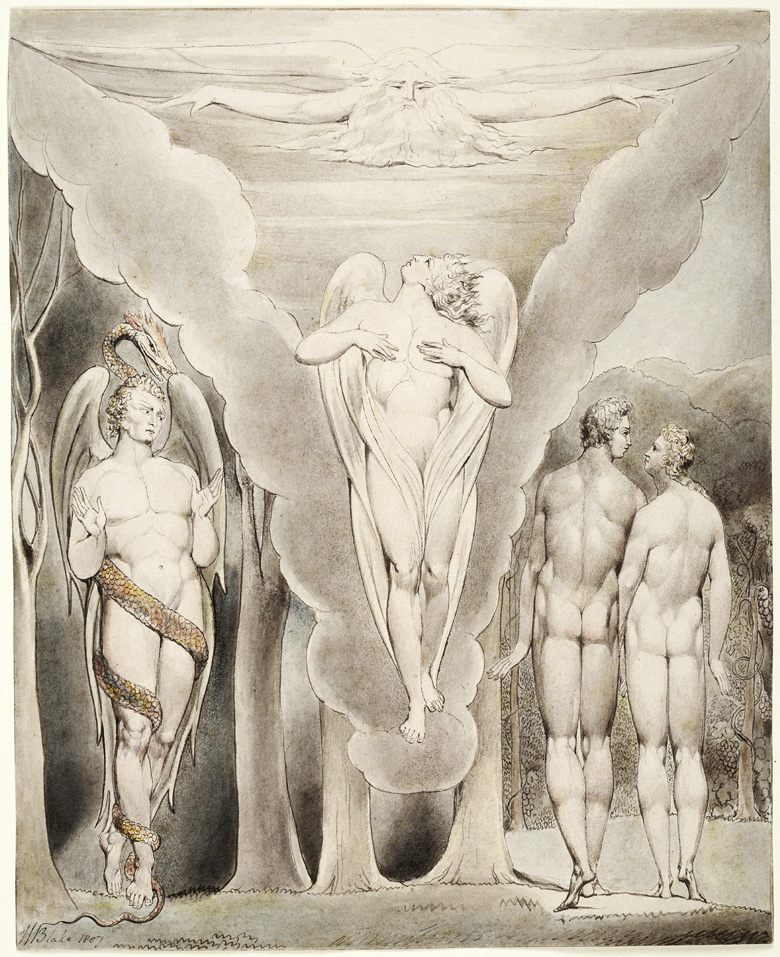
He applied his pictorial art to illustrate his own books and those of other writers: John Milton‘s Paradise Lost (1667) was his favourite. It consists of 10,000 blank verses, written without rhyme.
It is a narrative work, considered a classic of English literature and a masterpiece of world literature. The poem is a biblical epic about the fall of Adam and Eve. It deals with the dilema of good, evil and suffering.
He aims to answer the question of why a good and all-powerful God allows sin when he could prevent it. He begins by expressing the goal of “justifying the ways of God.” He describes, with psychological description, the protagonists: God, Adam, Eve and the devil.
Their attitudes end up revealing a hopeful message, hidden behind the loss of the Original Paradise. Heaven and hell represent states of mind, rather than physical spaces.
The relationship between poems and illustrations is complex and requires imagination of the reader. Blake is inspired not so much by the theme of the poem, but by the sensation it conveys.
The text begins in hell (described as permanent dissatisfaction and despair). There Satan (defined as suffering) decides to take revenge on God indirectly, attacking the newly created beings who live in a state of permanent happiness. Other relevant characters are the Archangels Saint Michael and Saint Rafael. As a believer and creator, the artist focused on mystical themes.
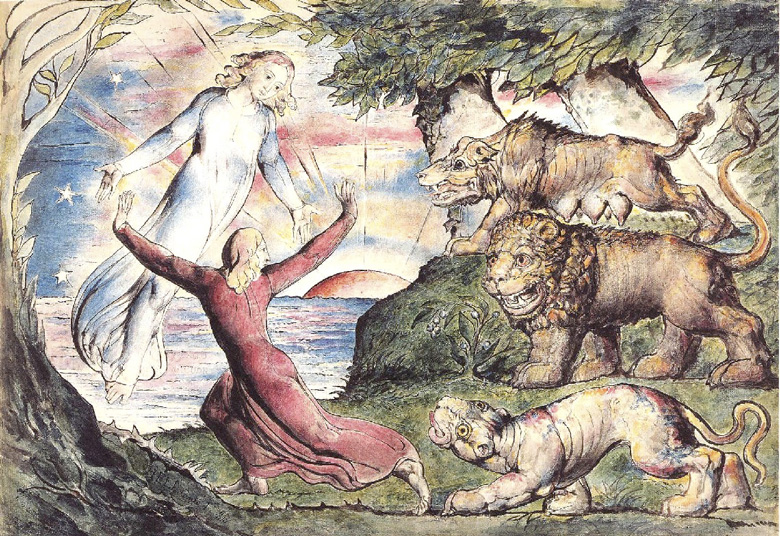
Posthumously, William Blake was recognised as a Saint by the Ecclesia Gnostica Catholica. In 1949, the Blake Prize for Best Religious Art was created in Australia in his honour.
Although Blake remained hidden, unknown throughout his life, he is currently considered a genius. Because of the relationship between his poetry and his prints, he is honoured as an example of the “Total Artist.” According to The Guardian newspaper:
“William Blake is by far the greatest artist who ever existed in Britain.”
He died in London in 1827 and was buried in an unmarked grave, with his wife, in Bunhill Fields Cemetery, destroyed by Nazi bombing in World War II. Recently (2018), his tombstone was rebuilt in a public square.
His life could be summed up in his own words:
“Imagination is not a state, it is human existence itself.”
